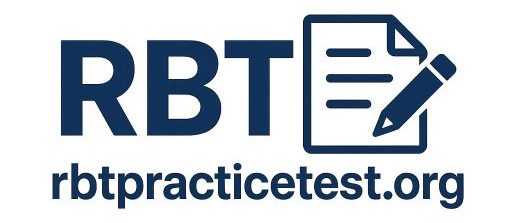When you’re working as a Registered Behavior Technician, knowing how to respond in a crisis isn’t just helpful, it’s essential. Every day, RBTs face situations where challenging behaviors can quickly escalate, putting both clients and staff at risk. That’s why having a solid crisis plan isn’t optional; it’s a critical part of your toolkit.
This article breaks down the core components of crisis response in ABA, including what crisis and emergency procedures are, how they’re used in practice, and the essential elements of a comprehensive crisis plan. You’ll also learn the steps to implement and develop a tailored crisis protocol. By mastering these procedures and regularly practicing them, RBTs can respond with confidence, minimize harm, and maintain a stable, supportive therapeutic environment.
Understanding crisis in ABA settings for RBTs
Managing crises in Applied Behavior Analysis (ABA) ensures safety for both clients and staff. Registered Behavior Technicians (RBTs) follow predefined protocols to maintain stability during unpredictable situations.
If you’re preparing for the RBT exam for certification, understanding basic crisis procedures will strengthen both your testing readiness and your future on-the-job performance.
What are crisis/emergency procedures?
Crisis and emergency procedures in ABA are step-by-step protocols for responding to sudden, high-risk events. These procedures guide your actions if a client becomes aggressive, tries to elope, engages in self-injury, or faces a medical emergency. Each protocol outlines responsibilities, communication steps, and specific responses tailored to the individual’s needs and the environment.
For example, a physical aggression protocol details how you maintain safety, alert team members, and minimize escalation. An elopement procedure includes monitoring exits, immediate pursuit methods, and contacting guardians or authorities swiftly if needed. Procedures for medical emergencies direct you to perform first aid, notify supervisors, and call emergency services without delay.
How crisis/emergency procedures are used in ABA
Crisis and emergency procedures in ABA therapy maintain client and staff safety during high-risk situations. In practice, you use predefined protocols that address specific crisis scenarios, such as aggression, elopement, self-injury, and medical emergencies.
Physical aggression: You follow techniques that prioritize maintaining your safety and the safety of the client. Interventions might include using calming strategies, removing triggers, and seeking support if necessary.
Elopement: You take active steps to prevent clients from leaving safe areas by supervising exits, implementing visual barriers, and alerting other staff or caregivers immediately if elopement occurs.
Self-injurious behavior: You intervene to reduce the risk of harm using both physical redirection and reinforcing alternative behaviors, always following the client’s behavior intervention plan.
Medical emergencies: You follow explicit steps for urgent clinical events, such as contacting emergency medical services, providing first aid, and communicating with family or guardians per your organization’s procedures.
In every crisis situation, you carry out de-escalation techniques, like using a calm tone, giving personal space, and providing simple prompts. You also document each incident in RBT session notes accurately and participate from ongoing training to reinforce responsiveness and adaptability. Consistent review and practice of procedures ensure you act quickly and effectively, minimizing harm and maintaining a stable therapeutic environment.
Key components of a comprehensive crisis plan
A comprehensive crisis plan for RBTs incorporates key elements to manage challenging behaviors while ensuring safety and compliance in ABA settings.
- Risk analysis and assessment:
Identify specific risks relevant to your setting, assess the likelihood and impact, and prioritize them based on severity. For example, review client history for aggression, elopement, or self-injury, and analyze environmental vulnerabilities.
- Crisis management team:
Define roles and responsibilities within your team. Establish a clear chain of command and internal communication channels so every staff member knows their function during a crisis, with contact information for supervisors and emergency services posted.
- Activation protocol and emergency contacts:
Outline procedures for activating crisis protocols, such as designated code words or signals. Maintain a current list of emergency contacts for staff, caregivers, and law enforcement, updated at least quarterly.
- Response procedures and crisis scenarios:
Develop scenario-specific protocols, such as for physical aggression or medical emergencies. Include contingency plans with alternative strategies, for instance, physical redirection for aggression and immediate area evacuation for fire alarms.
- Communication strategy:
Create protocols for internal communications, such as team updates, and external communications, including family notifications and incident reporting. Prepare sample scripts for media inquiries or public statements as necessary.
- Integration with other plans:
Align the crisis plan with existing behavior intervention plans (BIPs), business continuity plans, and disaster recovery protocols. Ensure documentation systems capture all critical data for post-incident review.
- Crisis communication:
Detailed procedures for stakeholder updates to ensure transparency. Use established channels such as email, secure messaging, or calls to inform guardians, administrators, and clinical supervisors during and after incidents.
Key crisis plan components and examples:
| Component | Example in ABA Crisis Plan |
| Risk Analysis | Aggression history, exit vulnerabilities |
| Team Roles | RBT: incident response, Supervisor: lead |
| Activation Protocols | Code phrases, emergency communication |
| Scenario Procedures | Aggression: de-escalation, Elopement: monitor exits |
| Communication Strategy | Email guardians, document incident |
| Integration | Sync with BIPs and continuity plans |
| Crisis Communication | Incident updates to stakeholders |
Strategically combining these components allows your crisis plan to respond effectively to a range of scenarios, ensuring readiness and supporting continuous improvement.
Implement crisis/emergency procedures according to protocol
Following established protocols when implementing crisis and emergency procedures ensures your response is prompt, safe, and consistent. You minimize risk and increase the effectiveness of interventions by adhering to defined steps and responsibilities during high-risk events.
Steps for developing a tailored crisis plan
Step 1: Assess risks by systematically identifying potential hazards and estimating their likelihood and impact for your specific setting. Common threats include physical aggression, elopement, medical emergencies, and self-injury.
Step 2: Form a crisis team by selecting members with expertise from various disciplines, such as RBTs, supervisors, and administrative staff. Team diversity ensures comprehensive coverage of responsibilities and quick decision making.
Step 3: Develop action plans with detailed instructions for each scenario. Outline step-by-step interventions, designate resource allocation, specify who activates each protocol, and link responses directly to client behavior patterns.
Step 4: Establish a communication strategy to keep all stakeholders informed. Set clear lines for internal updates to staff and external updates to families or emergency responders, promoting transparency and coordination.
Step 5: Train and review the crisis plan through hands-on practice and scenario-based drills. Use regular reviews to adapt the plan as organizational needs or client profiles change, maintaining long-term readiness for emergencies.
Step 6: Flexibility remains critical, adjust protocols immediately as new risks emerge or when evaluating post-incident feedback. Test plans through realistic simulations and keep plans updated by reviewing effectiveness after every crisis event, involving the entire team in post-incident analysis and continuous improvement.
Conclusion
A clear crisis plan helps you stay calm and act fast when emergencies happen. It protects clients, ensures safety, and supports a stable therapy environment.
As an RBT, learning how to respond is only part of the job. You also need to understand how crisis procedures align with ethical duties. Read more about the professional conduct and scope of practice to see how crisis management connects to professional conduct and responsible care. Controlling crisis plans will help you prepare with confidence and meet the expectations of a certified behavior technician.

